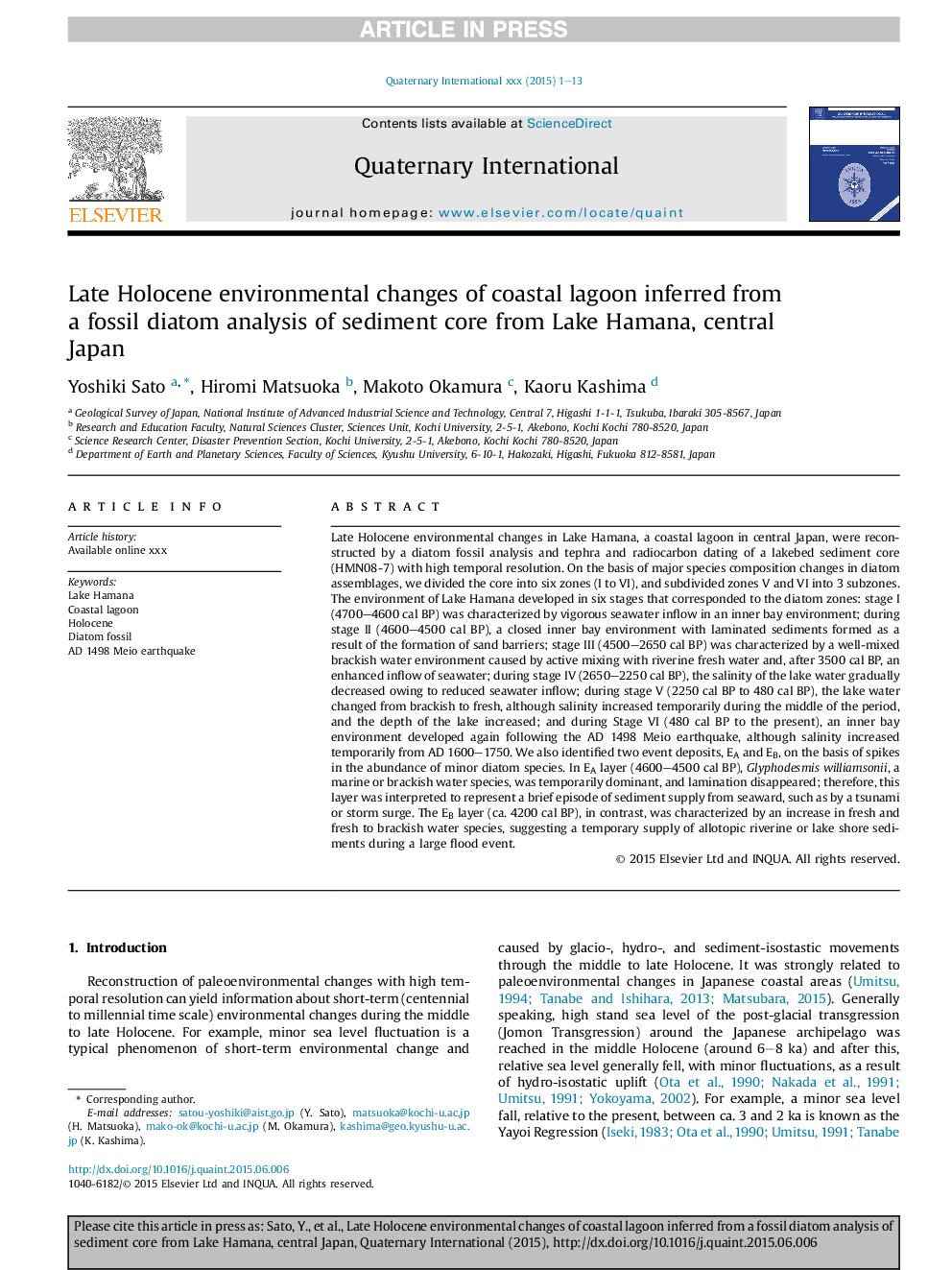| کد مقاله | کد نشریه | سال انتشار | مقاله انگلیسی | نسخه تمام متن |
|---|---|---|---|---|
| 7451372 | 1484101 | 2016 | 13 صفحه PDF | دانلود رایگان |
عنوان انگلیسی مقاله ISI
Late Holocene environmental changes of coastal lagoon inferred from a fossil diatom analysis of sediment core from Lake Hamana, central Japan
ترجمه فارسی عنوان
تغییرات زیست محیطی هولوسن در لابون ساحلی به واسطه تجزیه و تحلیل ادهزیوی فسیلی هسته رسوب از هامان، مرکز ژاپن
دانلود مقاله + سفارش ترجمه
دانلود مقاله ISI انگلیسی
رایگان برای ایرانیان
کلمات کلیدی
موضوعات مرتبط
مهندسی و علوم پایه
علوم زمین و سیارات
زمین شناسی
چکیده انگلیسی
Late Holocene environmental changes in Lake Hamana, a coastal lagoon in central Japan, were reconstructed by a diatom fossil analysis and tephra and radiocarbon dating of a lakebed sediment core (HMN08-7) with high temporal resolution. On the basis of major species composition changes in diatom assemblages, we divided the core into six zones (I to VI), and subdivided zones V and VI into 3 subzones. The environment of Lake Hamana developed in six stages that corresponded to the diatom zones: stage I (4700-4600 cal BP) was characterized by vigorous seawater inflow in an inner bay environment; during stage II (4600-4500 cal BP), a closed inner bay environment with laminated sediments formed as a result of the formation of sand barriers; stage III (4500-2650 cal BP) was characterized by a well-mixed brackish water environment caused by active mixing with riverine fresh water and, after 3500 cal BP, an enhanced inflow of seawater; during stage IV (2650-2250 cal BP), the salinity of the lake water gradually decreased owing to reduced seawater inflow; during stage V (2250 cal BP to 480 cal BP), the lake water changed from brackish to fresh, although salinity increased temporarily during the middle of the period, and the depth of the lake increased; and during Stage VI (480 cal BP to the present), an inner bay environment developed again following the AD 1498 Meio earthquake, although salinity increased temporarily from AD 1600-1750. We also identified two event deposits, EA and EB, on the basis of spikes in the abundance of minor diatom species. In EA layer (4600-4500 cal BP), Glyphodesmis williamsonii, a marine or brackish water species, was temporarily dominant, and lamination disappeared; therefore, this layer was interpreted to represent a brief episode of sediment supply from seaward, such as by a tsunami or storm surge. The EB layer (ca. 4200 cal BP), in contrast, was characterized by an increase in fresh and fresh to brackish water species, suggesting a temporary supply of allotopic riverine or lake shore sediments during a large flood event.
ناشر
Database: Elsevier - ScienceDirect (ساینس دایرکت)
Journal: Quaternary International - Volume 397, 18 March 2016, Pages 317-329
Journal: Quaternary International - Volume 397, 18 March 2016, Pages 317-329
نویسندگان
Yoshiki Sato, Hiromi Matsuoka, Makoto Okamura, Kaoru Kashima,
